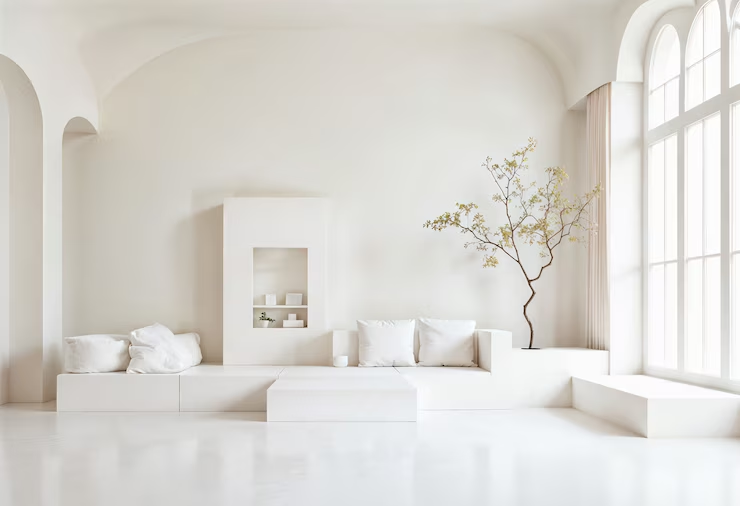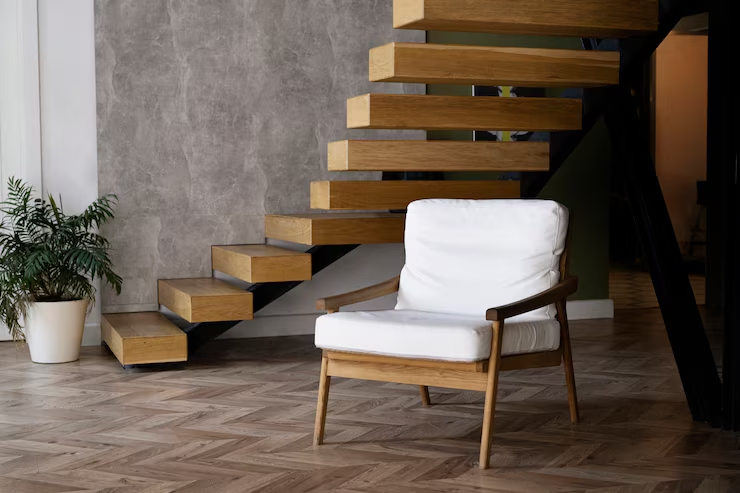Interior design is where aesthetic vision meets practical living. It’s about creating a space that feels both beautiful and functional and personal yet universal. Even so, the most well-thought-out design ideas can crash and burn when theory doesn’t match reality. Some of these ideas, although trendy at the time or pushed by professionals, have proven to be completely impractical or even downright annoying in real life.
Whether it’s a matter of bad ergonomics, maintenance nightmares, or simply ignoring how people actually live, certain concepts seemed destined to fail from the moment they were created. Let’s take a walk through some of the most ill-fated interior design ideas that, despite their visual appeal or initial hype, were doomed from the start.

All-White Interiors: The Aesthetic That Forgot Real Life
There’s no denying the visual appeal of an all-white interior. It gives off a feeling of openness, cleanliness, and luxury. Magazines and social media feeds often feature spotless white kitchens, living rooms, and even bathrooms that seem plucked from an ethereal dream. The problem? Real people don’t live in magazines.
White surfaces, especially floors, walls, and upholstery, are extremely difficult to maintain. They show dirt, dust, pet hair, and food spills almost immediately. What’s worse, frequent cleaning can lead to faster wear and tear. While an all-white space can look good in photographs, it rarely stays that way in a home with kids, pets, or frequent guests. Over time, the space becomes more of a source of anxiety than comfort, making this a design choice better suited for showrooms than lived-in homes.
Open-Concept Everything: Where Sound and Smell Travel Freely
The open-concept floor plan was once celebrated as the epitome of modern living. It promised better light, smoother family interaction, and a sense of spaciousness. While it succeeded in many of these goals, it also introduced new problems that traditional layouts had quietly solved for decades.
In an open-concept space, cooking smells travel freely into living areas. Noise from the TV travels into the kitchen, and vice versa. Privacy is almost nonexistent, making it challenging for different household members to engage in different activities without disturbing one another.
Moreover, heating and cooling large open areas efficiently can be costly. Many homeowners who jumped on the open-concept bandwagon found themselves longing for a quiet room with a door they could actually close.
Vessel Sinks: Form Over Function
Vessel sinks, those bowl-like basins that sit on top of bathroom vanities, became a designers favourite in the 2000s. They were seen as artistic and spa-like, adding a sculptural element to what is often a utilitarian space. But as stunning as they might look, they come with a lot of functional drawbacks.
First, they are often too high, which can make them awkward to use, especially for children or shorter people. Second, water tends to splash more easily, leading to water stains and constant cleaning of countertops. Third, they often leave little usable counter space and require special faucet fittings. What was supposed to elevate bathroom design often ended up frustrating homeowners who realized too late that these sinks prioritized looks over everyday use.
Popcorn Ceilings: A Texture No One Misses
This bumpy ceiling finish was widely used in mid-to-late 20th-century homes as a quick fix for hiding imperfections and sound dampening. At the time, it was promoted as modern and low-maintenance. Fast forward a few decades, and popcorn ceilings are now universally hated.
They collect dust, are hard to clean, and, worse, many older versions contain asbestos, making removal a hazardous process. Lighting also casts odd shadows on their uneven surfaces, which can make rooms look dark or dirty. Design trends have since shifted toward smooth, clean lines and minimalist finishes, rendering the popcorn ceiling not just outdated but a potential health hazard and home value detractor.
Glass Furniture: Sleek but Stressful
Glass tables, desks, and even shelving units were once considered the height of chic minimalism. Their transparency could make a room feel larger and lighter, which is helpful in small urban apartments. But the reality of living with glass furniture often brings more stress than style.
Glass scratches easily, shows every fingerprint, and requires constant cleaning to maintain its sleek appearance. It also chips and shatters under relatively little pressure. posing safety risks, especially in homes with children or pets. What seemed like a sleek, modern touch often becomes a source of anxiety, making many homeowners eventually trade it out for more durable and forgiving materials like wood or metal.
Wall-to-Wall Carpeting in Bathrooms: A Recipe for Regret
This design trend defies logic in almost every way. Popular in the 1970s and 1980s, wall-to-wall carpeting in bathrooms was intended to create a warm, plush, and cozy environment. While stepping out of the shower onto a soft carpet might sound appealing, the long-term consequences are anything but that.
Carpeting in a high-moisture environment quickly becomes a breeding ground for mold, mildew, and bacteria. Spills and leaks soak into the material, leading to bad smells and health concerns. Cleaning is nearly impossible without professional help, and replacing it is expensive. Unsurprisingly, this trend didn’t last long and is now viewed as one of the worst design ideas in modern home history.

Floating Staircases Without Railings: Dangerous by Design
I think floating staircases are undeniably stunning. Their sleek, minimalist appearance creates a sense of openness, making them a favorite in luxury homes and architectural magazines. However, when designers omit railings for aesthetic reasons, they compromise safety for style.
The lack of support poses serious risks, especially for children, the elderly, and even pets. Even fully able adults have reported anxiety or near-accidents when navigating these stairs. In many jurisdictions, building codes now prohibit such designs without railings, reflecting the widespread understanding that this was an architectural gamble that didn’t pay off.
Barn Doors on Bedrooms and Bathrooms: Stylish but Noisy
The modern farmhouse trend brought barn doors into mainstream interior design, and at first, they seemed like a clever solution. They slide instead of swing, saving space and adding rustic charm. But when placed in bedrooms and especially bathrooms, they create more problems than they solve.
Unlike traditional doors, barn doors don’t seal tightly against walls. This means minimal soundproofing and virtually no privacy. In bathrooms, this can be particularly uncomfortable. Furthermore, they often leave gaps at the top, bottom, or sides, making them ineffective for controlling light, noise, or odor. The hardware can also be noisy, and the door itself can be difficult to lock. While trendy, barn doors are better suited to pantries or offices.
Over-The-Top Theme Rooms: A One-Way Ticket to Regret
At some point, everyone has seen a house with a jungle-themed bathroom or a medieval castle-inspired dining room. While these bold theme rooms can showcase a homeowner’s personality or sense of humor, they often age poorly and limit flexibility.
The problem with overly thematic spaces is that they rarely allow for change. Once a room is built around an exaggerated motif, it becomes difficult to adapt it for other purposes without a full-scale renovation. Moreover, such designs can hurt resale value, as most buyers prefer neutral backdrops they can personalize. What begins as a fun, creative endeavor often ends in years of awkwardly trying to tone down a commitment that was never meant to be permanent.
Do you want to improve your interior design skills? Maybe you don’t want to make the same mistakes that I did when I first started out. Here is a book that will teach you how to make better choices if you are planning to renovate your home.
If you liked this article, here’s what to read next: Over 60? You Should Avoid These 9 Decor Mistakes